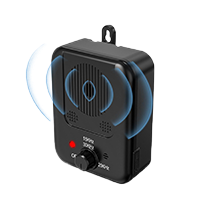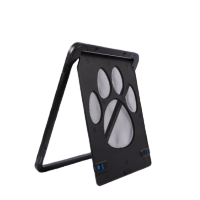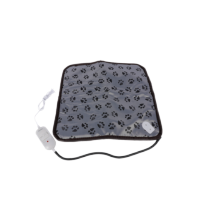Table of Contents
- Introduction
- Brief Overview of Wireless Fences
- Understanding Wireless Fence Technology
- Factors to Consider When Choosing a Wireless Fence
- Types of Wireless Fences
- Choosing the Right Collar
- Training Your Dog
- Maintenance and Troubleshooting
- Conclusion
- FAQs
Introduction
Choosing the right wireless fence for your dog can be a daunting task. With so many options available, how do you know which one is best for your furry friend? Let’s break it down!
Brief Overview of Wireless Fences
Wireless dog fences are a modern solution to keep your pet within a designated area without the need for a physical fence. They come in various types, including wireless, and GPS-based systems.
Benefits of Wireless Fences Compared to Traditional Fences
- Flexibility: Easily portable and adjustable boundaries.
- Aesthetics: No physical barrier altering the look of your yard.
- Cost-effective: Often cheaper than installing a traditional fence.
Importance of Choosing the Right Wireless Fence for Your Dog
Selecting the right wireless fence is crucial for your dog’s safety and your peace of mind. The right system will suit your dog’s personality and the specific characteristics of your yard.
Understanding Wireless Fence Technology
How Wireless Fences Work
Wireless fences create an invisible boundary using radio or GPS signals. When your dog approaches the boundary, the receiver collar emits a warning sound or static correction.
Different Types of Fences
In-ground Fences
- Pros: Highly customizable boundary shapes.
- Cons: Requires installation and digging.
Wireless Fences
- Pros: Easy setup, portable.
- Cons: Limited to circular boundaries.
GPS Fences
- Pros: Large coverage area, no physical components.
- Cons: Can be less accurate in densely wooded areas.
| Type | Pros | Cons |
|---|---|---|
| In-ground | Customizable boundaries | Installation required |
| Wireless | Easy setup, portable | Limited to circular boundaries |
| GPS | Large coverage area, no digging | Less accurate in some areas |
Key Components of a Wireless Fence System
- Transmitter: Sends the boundary signal.
- Receiver Collar: Worn by the dog, receives signals.
- Boundary Wires/Flags: Used in in-ground systems to mark the boundary.
Factors to Consider When Choosing a Wireless Fence
Dog’s Personality and Behavior
Active or Sedentary
- Active Dogs: Need a reliable and wide-ranging system.
- Sedentary Dogs: May do well with simpler systems.
Sensitive or Stubborn
- Sensitive Dogs: Require lower correction levels.
- Stubborn Dogs: May need adjustable correction settings.
Escape Artist Tendencies
- Frequent Escapees: Consider a system with a strong and consistent signal.
| Dog Type | Recommended Features |
|---|---|
| Active | Wide-ranging system |
| Sedentary | Simple system |
| Sensitive | Lower correction levels |
| Stubborn | Adjustable correction settings |
| Frequent Escapees | Strong and consistent signal |
Yard Size and Shape
Area to be Covered
- Small Yards: Most systems will work.
- Large Yards: Consider GPS or expandable systems.
Property Boundaries
- Irregular Shapes: In-ground systems offer more customization.
- Obstacles (trees, ponds, etc.): Wireless and GPS systems need a clear line of sight.
Budget
Cost of the System
- Basic Systems: Affordable but might lack features.
- Advanced Systems: Higher cost with more features.
Additional Costs
- Batteries: Regular replacements may be needed.
- Replacement Collars: In case of loss or damage.
Safety Features
Correction Levels
- Multiple Levels: Ensure proper training without overcorrecting.
Waterproof Collars
- Necessary for Outdoor Use: Ensures longevity and reliability.
Low Battery Indicators
- Important for Safety: Prevents the collar from failing unexpectedly.
Ease of Installation and Use
Setup Process
- Quick Setup: Ideal for those with limited time.
- Detailed Setup: May require professional help for in-ground systems.
Boundary Adjustments
- Easy Adjustments: For flexible and frequent changes.
- Fixed Boundaries: More stable but less flexible.
Collar Fit and Comfort
- Adjustable Collars: Ensures comfort for different dog sizes.
- Durable Materials: Prevents wear and tear.
Types of Wireless Fences
Choosing the right type of wireless fence is crucial for your dog’s safety and your peace of mind. Here, we explore the different types available and their specific benefits.
In-ground Fences
Pros and Cons
Pros:
- Highly customizable boundary shapes
- Stable signal without interference
Cons:
- Requires digging for installation
- Time-consuming setup
Installation Process
- Plan Your Boundary: Outline the area where you want the fence.
- Dig Trenches: Create a shallow trench around the boundary.
- Lay the Wire: Place the wire in the trench and cover it with soil.
- Connect the Transmitter: Attach the wire ends to the transmitter.
- Test the System: Ensure the boundary is properly set up.
- Train Your Dog: Introduce your dog to the new boundary.
| Step | Description |
|---|---|
| Plan Your Boundary | Outline the area |
| Dig Trenches | Create shallow trenches |
| Lay the Wire | Place wire in trenches |
| Connect Transmitter | Attach wire to transmitter |
| Test the System | Ensure boundary setup |
| Train Your Dog | Introduce dog to boundary |
Wireless Fences
Pros and Cons
Pros:
- Easy to set up and portable
- No physical digging required
Cons:
- Limited to circular boundaries
- Can be affected by obstacles and interference
Coverage Area
Wireless fences typically cover a circular area, adjustable up to a certain radius, usually between 90 to 210 feet.
GPS Fences
Pros and Cons
Pros:
- No physical components or boundaries
- Large coverage area, suitable for expansive properties
Cons:
- Can be less accurate in densely wooded or urban areas
- Dependent on satellite signals
Suitable for Which Dogs
Ideal for:
- Dogs on large properties
- Adventurous dogs needing wide-ranging boundaries
| Type | Pros | Cons | Suitable For |
|---|---|---|---|
| In-ground | Customizable, stable signal | Requires installation | All dog sizes and types |
| Wireless | Easy setup, portable | Limited to circular areas | Small to medium yards |
| GPS | Large coverage, no digging | Less accurate in some areas | Large properties, explorers |
Choosing the Right Collar
Selecting the appropriate collar is essential for the effectiveness and comfort of the wireless fence system.
Importance of Proper Fit
A well-fitted collar ensures that the contact points touch the dog’s skin, providing consistent signals without causing discomfort.
Different Types of Collars
Shock, Vibration, Tone
- Shock Collars: Provide static correction.
- Vibration Collars: Use vibrations for correction.
- Tone Collars: Emit a sound to alert the dog.
Considerations for Sensitive Dogs
Sensitive dogs may respond better to tone or vibration collars, as they are less intrusive than shock collars.
| Collar Type | Description | Suitable For |
|---|---|---|
| Shock | Static correction | Stubborn or large dogs |
| Vibration | Vibrational alert | Sensitive or small dogs |
| Tone | Audible sound | Sensitive or training dogs |
Training Your Dog
Proper training is vital to ensure your dog understands and respects the boundaries set by the wireless fence.
Importance of Gradual Introduction
Introducing your dog gradually helps them understand the new boundaries without causing fear or anxiety.
Training Tips and Techniques
- Start with Leash Training: Walk your dog around the boundary with the collar on.
- Use Positive Reinforcement: Reward your dog for staying within the boundaries.
- Increase Freedom Gradually: Allow your dog more freedom as they learn the boundaries.
Troubleshooting Common Issues
- Dog Ignores Boundary: Reinforce training with more supervision.
- Collar Doesn’t Trigger: Check fit and battery levels.
| Issue | Solution |
|---|---|
| Dog Ignores Boundary | Reinforce training with supervision |
| Collar Doesn’t Trigger | Check fit and battery levels |
Maintenance and Troubleshooting
Maintaining your wireless fence system ensures its longevity and reliability.
Battery Life and Replacement
Regularly check and replace the batteries in the receiver collar to ensure consistent performance.
Collar Care
- Regular Cleaning: Keep the collar clean and dry.
- Check for Wear and Tear: Replace if necessary.
Troubleshooting Common Problems
- Signal Interference: Ensure there are no large metal objects nearby.
- Boundary Adjustments: Recheck the transmitter settings if boundaries seem off.
| Maintenance Task | Description |
|---|---|
| Battery Replacement | Check and replace regularly |
| Collar Cleaning | Keep clean and dry |
| Signal Interference | Remove nearby metal objects |
| Boundary Adjustments | Recheck transmitter settings |
Conclusion
Recap of Key Factors to Consider
Choosing the best wireless fence involves considering your dog’s personality, yard size, budget, safety features, and ease of installation. Understanding the types of fences—such as in-ground, wireless, and GPS—can help you make an informed decision.
Importance of Choosing the Right Wireless Fence for Your Dog’s Safety and Happiness
Selecting the right wireless fence ensures your dog’s safety while providing them with the freedom to explore. A well-chosen system leads to a happy and well-behaved pet, giving you peace of mind.
FAQs
What to Look for in an Electric Dog Fence?
When selecting an electric dog fence, consider:
- Coverage Area: Ensure it fits your yard size.
- Collar Comfort: Proper fit and comfort for your dog.
- Correction Levels: Adjustable to suit your dog’s temperament.
- Ease of Installation: Simple setup and maintenance.
Are Wireless Dog Fences Any Good?
Yes, wireless dog fences are effective for many pet owners. They provide flexibility, are easy to install, and can be moved as needed. However, they may not be suitable for all yard shapes and sizes.
Which is Better, Underground or Wireless Dog Fence?
Underground Fences:
- Pros: Customizable boundaries, stable signals.
- Cons: Requires installation, not portable.
Wireless Fences:
- Pros: Easy setup, portable.
- Cons: Limited to circular areas, can be affected by obstacles.
Choose based on your yard and installation preferences.
Does a Wireless Dog Fence Have to Be a Circle?
Most wireless dog fences create a circular boundary. However, in-ground and GPS systems offer more flexible boundary shapes to fit your specific needs.





